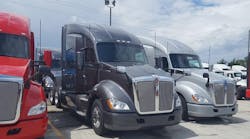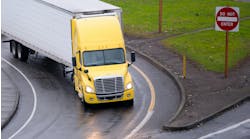Name: Ben Wiesen
Title: President
Company: Carrier Logistics
Carrier Logistics has over 40 years of experience in the freight transportation and logistics industry. Its flagship product, FACTS, helps transportation companies integrate carrier management and freight broker operations.
Explain Carrier Logistics’ point of view with asset tracking.
“We provide tools to track freight throughout its life cycle, From service request, to pickup, to movement through the network, to delivery, to financial settlement. While the management of the shipments is done exclusively within our application and relies heavily on our own dock management system for movement of shipments within facilities, we incorporate third-party asset tracking solutions to monitor truck and trailer locations. Our software manages the relationships between shipments and equipment to connect these data sources and provide meaning information to the user.
“Specifically, we use asset tracking data to show internal personnel current and historical positions of their equipment and freight, and to provide freight customers with accurate ETAs for deliveries and pickups. Fleet managers are better able to schedule equipment maintenance and balance equipment polls, and loss prevention specialists can monitor high value shipments and determine cargo theft situations in near real time.”
What’s different in asset tracking now from many years ago?
“From an application perspective, asset tracking has become a requirement versus a ‘nice-to-have’ as it was just a few years ago. From a technical perspective, while there in a tradeoff of increased price, features of just a few years ago (tethered vs untethered trailer tracking, frequency of ‘pings’, accuracy, battery life sufficient for longer trips), are now primarily table stakes included in modern systems. The supply chain demands real time locations and accurate ETA’s. Just a few years ago it was common to only receive location data every 4-6 hours from a trailer tracking device. In that amount of time, a truck can travel hundreds of miles. Now we are seeing data current to the nearest minute.
“Tracking LTL freight has also changed over time. Shippers are utilizing third party logistics providers (LSP’s) and those providers have demanded the same data flows of information for all modes. Therefore, the LTL providers now need to send location data which previously was only considered pertinent for dedicated TL moves. This has led to an increasing need to capture more location data as freight is moved through a company’s network until it is ultimately delivered to the end user.”
What about security issues?
“Cargo theft has been a concern since the days of covered wagons and continues to be a major concern throughout the supply chain. Companies are more equipped to prevent theft today because the cost of tracking equipment and freight has decreased over the last decade, but at the same time, sharing very accurate equipment locations and ETA makes it much easier for bad characters to strategically plan their activities. Asset tracking today is more than just knowing locations. It includes sensor data: trailer temperature, vehicle speed, and trailer door open events a commonly recorded. If the system detects a trailer door opening in an unscheduled location, alerts and workflows are triggered to determine reason and minimize disruption.”
What’s the future looking like for asset tracking?
I anticipate more automation on LTL docks. Currently, most companies tracking freight within their facilities do so using barcode scanners, which require an employee to actively scan each piece of freight. Sometimes this requires the dock employee to have to get off their forklift, which adds even more time to freight handling and is also a safety concern. In the future, RFID systems will provide passive location updates, reducing handling time and increasing tracking accuracies.”




